
How To Eat Well
Below is my no-nonsense, straightforward guide on how to nourish your body, feel energised, reduce food cravings, and build a healthy relationship with food.
With so much nutrition information out there, it’s easy to feel overwhelmed by conflicting opinions and opposing dietary philosophies. Scrolling through social media, it’s tempting to buy into diet plans or get fixated on transformation stories. But the truth is, lasting change takes time. We need to educate ourselves on what our bodies truly need to be nourished and healthy, so we can stay consistent in the long run. Remember, it’s a journey—not an overnight quick fix.
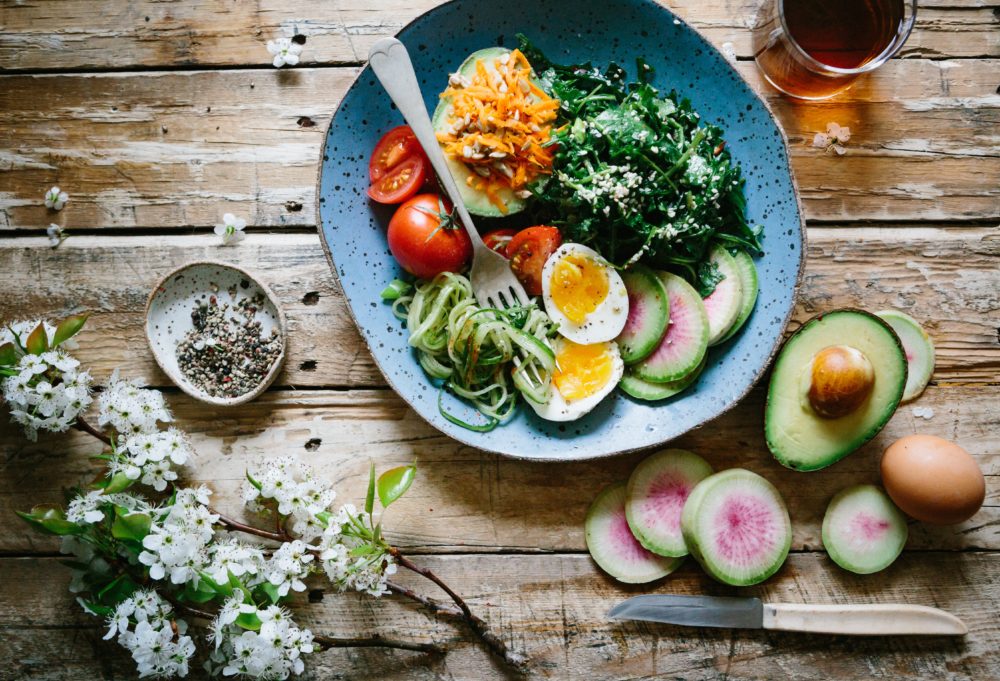
Why It’s Important To Eat Well
We all know we should eat better, but what does that really mean? Food isn’t just calories—it’s information for our bodies. It impacts everything: our hormones (the body’s messaging system), immune function, gut health, gene expression (how our DNA instructions are turned into action), mood, brain function, energy levels, sleep, and even our relationships.
The food we eat every day plays a huge role in how we feel and how we interact with others. If you want to make a positive change in any area of your life, start with your plate.
Eat to nourish your body, not to avoid calories.
Here’s a common scenario: you skip breakfast because you’ve heard fasting is good for you — and truthfully, the morning was so hectic that grabbing an oat flat white felt easier. By midday, you reach for a protein bar, but by the afternoon your body is crying out for real nutrients. You have a latte, some dried fruit and nuts, but also some chocolate because nothing feels satisfying.
By dinner, you’re starving. You eat the leftovers from the kids’ lunchboxes, cook the stir-fry you had planned, but also pick at their fish and chips. Guilt sets in over the processed food, so you grab a flavoured yoghurt to “balance it out,” but it doesn’t help. A few spoonfuls of ice cream quickly turn into a third of the tub, leaving you feeling worse. The negative self-talk kicks in, and before long you’re convinced you can’t stick to a healthy diet or take control of your wellbeing.
This cycle is why it’s so important to focus on nourishing your body, not depriving it. Building a healthy relationship with food takes time — but it’s the foundation for everything else.
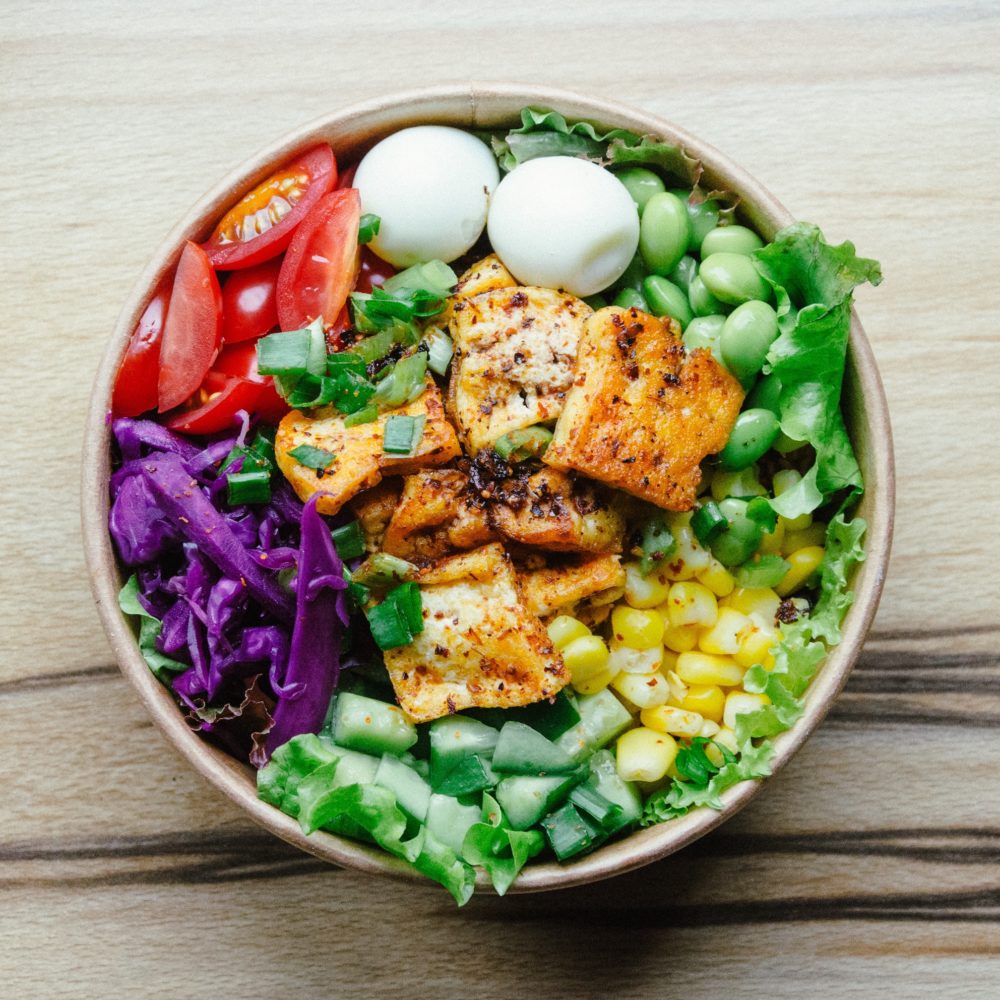
Why Is It So Confusing?
I love science, but unfortunately, nutrition science is sometimes manipulated to benefit whichever industry is funding the research. Food policies are, in part, controlled by these same industries. Processed food is scientifically engineered to make us crave more of it, and marketing strategies are designed to find clever, innovative ways to sell as much as possible.
When I was working in advertising, I remember cutting my vacation short for an important meeting with a major player in the ultra-processed food industry. They wanted us to pitch their new campaign. During the meeting, the Marketing Director stood up and gave a passionate speech — not about gaining more market share, because they were already the leader — but about getting people to eat more. He was driven, emotional, and focused, especially when it came to reaching children. All I could think was how much better that energy could be spent on tackling childhood obesity or helping families improve their children’s behaviour through diet. But that wasn’t the goal — their mission was to push more sugar, salt, and preservatives. I left the meeting feeling numb. Fortunately, we declined the offer to work on the campaign, but it doesn’t change the fact that ultra-processed food marketing is a powerful force, one that shapes our eating habits and influences our choices, often at the expense of our health.
Another reason why eating healthy can be confusing is that the ‘healthy’ food pyramid we once relied on is no longer the authority on nutrition we thought it was. I remember my Grandma questioning it when I was a teenager. She used to eat lard, fresh eggs, and vegetables from her garden daily, with fruit only on special occasions. She compared this to the low-fat, high-carb diet recommended in the 80s and 90s — and to some extent, still promoted today. Interestingly, her body shape changed from a lean, long ‘green bean’ to a more pear-shaped figure once her diet shifted to include the recommended ‘5-8 servings of breads and grains’ daily.
There’s a long and intriguing history behind American dietary recommendations. If you’re interested in delving deeper, I recommend reading Death by Food Pyramid: How Shoddy Science, Sketchy Politics and Shady Special Interests Have Ruined Our Health
The Principles Of Healthy Eating – How And What To Eat.
Below is my no-nonsense guide on how to nourish your body, feel energised, reduce food cravings, and build a healthy relationship with food, especially as we get older. This guide provides general principles only, recognising that everyone’s needs are different and our bodies require various nutrients at different stages of life. These guidelines are designed to help you choose foods that create a positive psychological response and set you on the path to feeling like the best, healthiest, and strongest version of yourself.
- Each meal meal should contain healthy fats, adequate protein and fibre.
- Make vegetables the hero of your meals: the more colours and variety, the better for your body and your gut.
- Go slow. Start your meal with a simple ritual like moving your phone away from you and taking 2 deep breaths in and out to ground yourself and connect with the present moment.
Hydration
Start your day with a big glass of warm water, even better if you add freshly squeezed lemon and a pinch of sea salt, or electrolytes, but filtered warm water is just fine. This one is such an easy win, and we all need to start our day with easy wins.
Drink lots of water during the day but also pay attention to how you feel; as important as it is to hydrate, you can also drink too much water and dilute the amount of salt and electrolytes in your body. So just keep an eye on it and drink until you feel hydrated. Herbal tea counts, just not drinks like coffee or caffeinated tea.
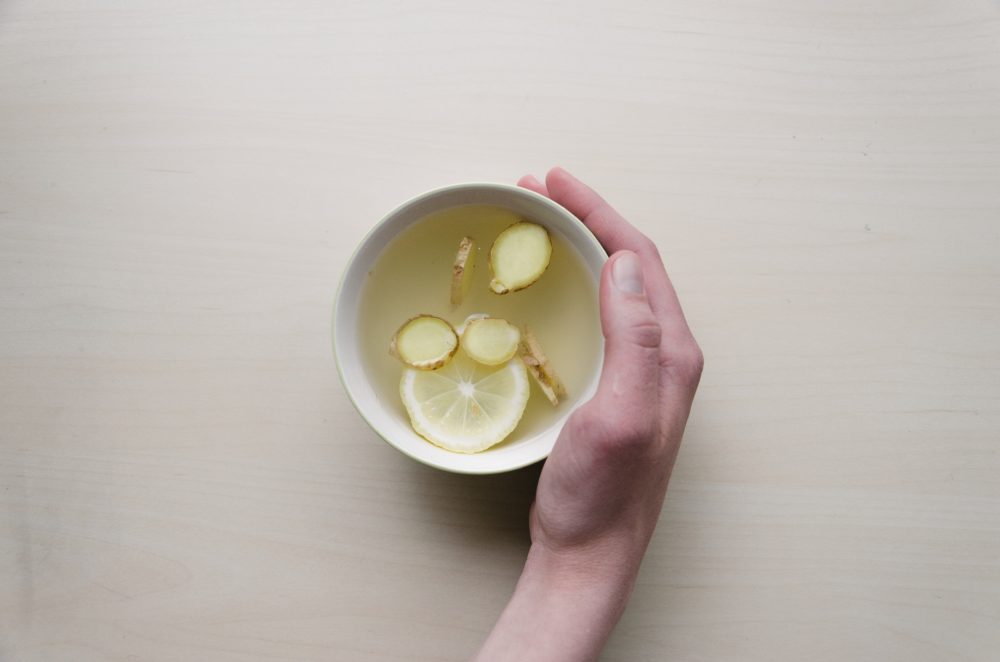
Sugar
The tricky thing about sugar is it’s really easy to eat too much of it. When we eat sugar our glucose levels go up. Excess glucose becomes toxic in our bodies so insulin levels increase to move the glucose from the blood system and into our cells. When our bodies are not functioning optimally, or when we have too much glucose circulating in our blood system, our cells become resistant to insulin, which makes the pancreas secrete more insulin to drive the glucose into the cells, and ultimately deposits this excess energy into fat cells. Most of the time when we are reaching for sugary foods it’s not because we are hungry, but often has more to do with how we are feeling. You might be craving connection and a sense of calm…you might just need a hug!
The other tricky thing about sugar is it’s hiding everywhere – even in “healthy” foods like flavoured waters, flavoured yoghurts, sweetened milk alternatives (almond milk, oat milk), spreads, bottled sauces (eg: stir-fry sauce, pasta sauce), cereals, muesli bars, smoothies. So it’s pretty easy to get more of it in your diet than you need.

Ultra-Processed Foods
Ultra-processed foods are industrially manufactured products made from ingredients not typically used in home cooking, like preservatives, artificial flavours, sweeteners, and emulsifiers. These foods often have little to no whole food content and include items like sugary snacks, soft drinks, instant noodles, and packaged frozen meals. They’re designed to be convenient, hyper-palatable, and have a long shelf life, but they’re often low in nutrients and linked to various health issues.
Around 73% of the food supply in grocery stores is ultra-processed (1). This means that when you walk into a grocery store, less than 30% of the products on the shelves are made from whole or minimally processed ingredients. The majority of what’s available is filled with additives, preservatives, and artificial ingredients designed to enhance taste, extend shelf life, and keep you coming back for more. This imbalance makes it challenging to make healthy choices, as the most accessible and prominently marketed foods are often the least nutritious. To nourish your body, you need to actively seek out that smaller portion of whole, nutrient-dense foods that are often hidden amongst the overwhelming array of ultra-processed options.
Field to Fork
Focus on eating as close to nature as possible. When in doubt, consider how many steps are needed to get food from the field to your fork. Take olive oil, for example — the process to extract it is simple; pressing the olives. Now compare that to more refined oils like canola, cottonseed, or sunflower. These seeds don’t easily give up their oils, so extraction often involves chemical solvents, followed by refining, purifying, and sometimes chemical alteration.
For breakfast, opt for whole foods like eggs, fresh spinach, and avocado instead of processed cereal and sugary yogurt from a tub. If you’re on the go, choose a piece of fruit or raw nuts over a health bar that’s potentially loaded with hidden ingredients. Craving something to munch on? Grab linseed (flax) crackers with a short, simple ingredient list instead of ultra-processed crackers. In general, the louder a product shouts about being healthy, the less likely it actually is.
You want to eat as close to nature as possible. If you are in doubt, think about how many steps are needed to get food from the field, to your fork.

Eat A Diverse Range Of Plants
It doesn’t matter if you’re an omnivore, vegetarian, or vegan — you need to eat a predominantly plant-based diet. That might sound like conflicting advice (because meat obviously isn’t a plant), but no matter how you get your protein, plants should always take priority. Aim for 5–10 cups of veggies daily. Yep, that many! Focus on non-starchy vegetables like spinach, kale, broccoli, silver beet, bok choy, leeks, asparagus, celery, rocket, sprouts, and capsicums. Veggies are packed with essential nutrients and fibre, which not only keep us full but also help detoxify the body and support regular digestion.
Just as important as the amount is the variety. A diverse mix of plants feeds a diverse gut microbiome — the community of bacteria in your digestive system that influences everything from immunity and mood to energy and metabolism. Different plants contain different types of fibre and phytonutrients, and each one nourishes different strains of beneficial bacteria. Think of it like giving your gut garden a full spectrum of fertilizer. The more colours and plant types you eat, the more resilient and balanced your microbiome becomes.
Fruit is amazing too. It provides a natural source of energy, fibre, vitamins, and antioxidants that support overall health. Fruits like berries, apples, and citrus are especially high in vitamins like C and A, which boost immunity and help fight inflammation. Incorporating a variety of colourful fruits into your diet ensures you’re getting a wide range of nutrients that promote heart health, digestion, and skin vitality. Aim for 1–2 pieces of fruit daily.
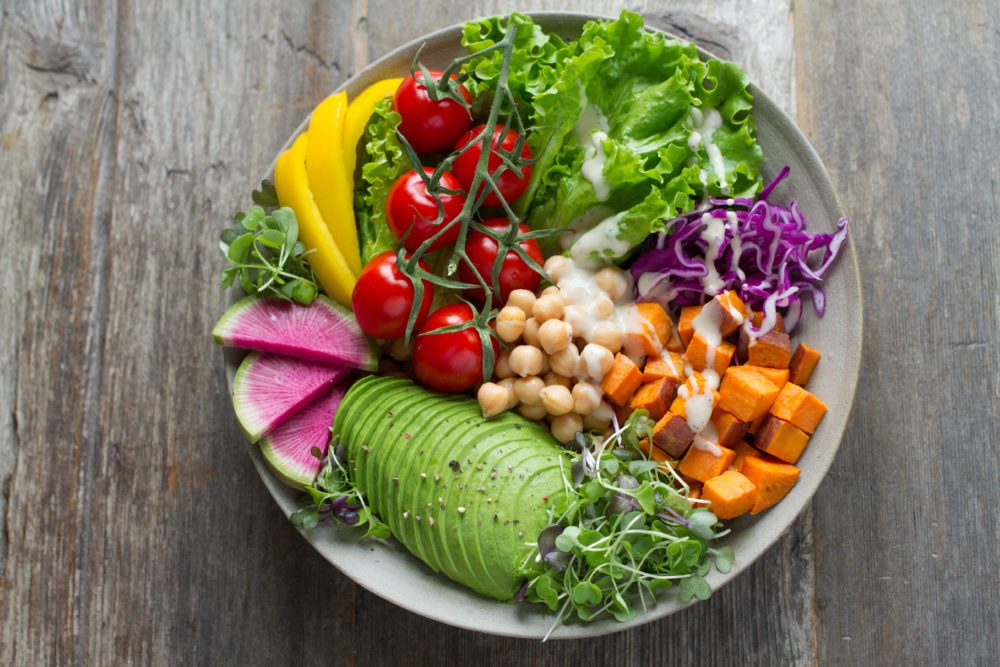
Fats
Eat moderate amounts of healthy fats. This might still be confronting for those of us who grew up in the 80s and 90s during the low-fat craze. I deprived my body of fats for most of my ballet career because I believed a low-fat diet was the key to optimum health and energy. But when I finally increased my intake of good fats, I noticed an immediate difference — I felt more satiated after meals and no longer needed to snack every couple of hours. This constant snacking is typical on a high-carb, low-fat diet because it causes frequent insulin spikes.
New research shows that dietary cholesterol doesn’t directly make you fat, and cholesterol only becomes problematic when it’s damaged by oxidation, a process driven by inflammation in the body. Healthy fats, like those found in olive oil, avocado, salmon, seeds, coconut products, and greek yoghurt, are essential for our bodies to thrive. They help keep us full, support brain function, reduce inflammation, and are critical for hormone balance.
Once I did increase my good fats, I instantly noticed how satisfied I felt after meals and no longer needing to snack every couple of hours
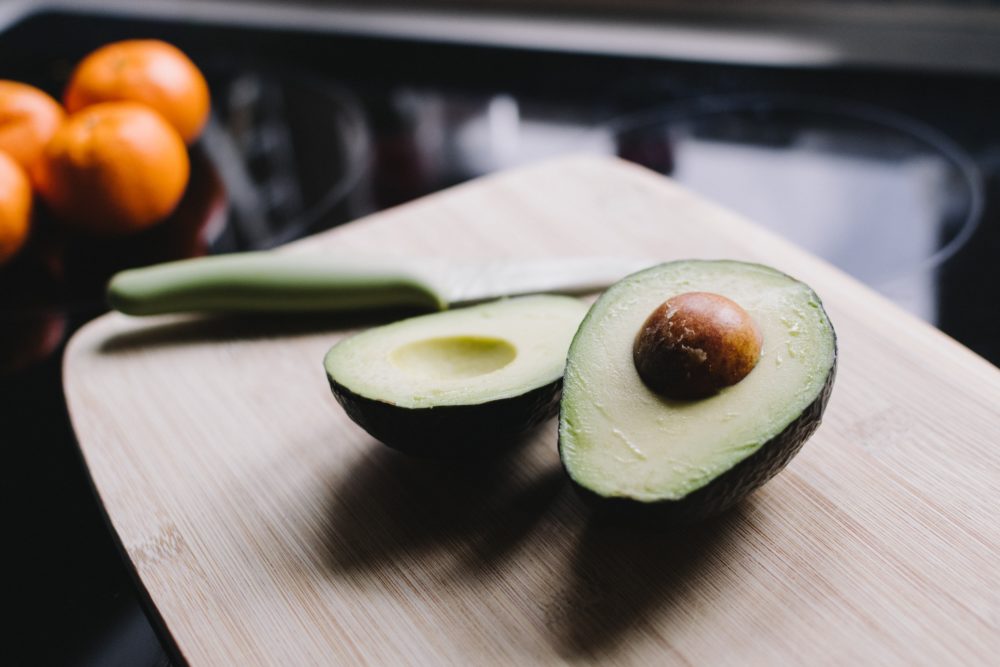
Dairy
If you do consume dairy, choose full-fat and ideally organic rather than low-fat options.
Goat and sheep dairy products are often better choices because they contain only A2 protein, which is easier for many people to digest. Greek yoghurt is also a great choice as it is high in protein and is a good source of calcium.
Signs that your body may struggle with dairy include IBS, skin issues, puffiness, inflammation, or strong cravings for dairy. If you experience these symptoms, try eliminating dairy for a period of time and monitor any changes in your health and symptoms.
While dairy is a good source of calcium, there are also non-dairy options rich in this mineral. Here’s a list of foods that provide calcium, including both dairy and non-dairy options
Carbohydrates
Everyone needs different amounts of carbohydrates, and these needs can change over time based on factors such as energy output, stress levels, age, disease, pregnancy, and breastfeeding. Carbohydrates are essentially sugar molecules that our bodies break down into energy. They fall into three main categories: sugars, starches, and dietary fibre.
Not all carbohydrates are created equal. A sweet potato is a carbohydrate, but so is a donut!
Focus on complex carbohydrates — such as fruits, starchy vegetables, brown rice, oats, quinoa, and lentils.
It’s easy to consume more carbohydrates than our bodies actually need, and it’s not entirely our fault. The standard “healthy” food pyramid promotes consuming 5 or more servings of bread, baked goods, cereals, pasta, and fruit juice daily. When we eat carbohydrates, our body releases insulin to regulate blood sugar levels. However, excessive carbohydrate intake can lead to insulin resistance, which over time can result in pre-diabetes, type 2 diabetes, food cravings, emotional eating, weight gain, mood swings, and a general feeling of losing control over your diet.
As a guide, aim for a few servings of complex carbohydrates each day and pay attention to your energy levels, digestion, sleep, and overall well-being to determine what your body needs. Personally, I find that if I haven’t eaten enough during the day, I crave sugary snacks by the afternoon. Conversely, if I consume too many carbs, I feel heavy, sluggish, and moody.
Be cautious with items like rice flour and oat milks; which we typically consider health foods. They are still processed and high-GI, which can spike insulin levels.
As a general rule, women often need slightly more carbohydrates than men. And research shows that including complex carbs at dinner may improve sleep quality, as they support the release of serotonin and melatonin — the hormones that help regulate your sleep cycle.
Protein
Eating adequate protein is essential for maintaining muscle mass, preventing muscle atrophy, and supporting overall health. Protein is the building block of our muscles, tissues, and cells, playing a critical role in repairing and regenerating them. As we age, muscle loss can naturally occur, but consuming enough protein helps preserve muscle strength and function. It also supports healthy cell turnover, immune function, and hormone production. Prioritising protein from sources like lean meats, fish, eggs, dairy, legumes, and plant-based options is really important in maintaining your body’s strength, vitality, and long-term health.
When it comes to fish and seafood, prioritise fresh, sustainable options whenever possible.
But what if you can’t always afford or access free-range, grass-fed, organic, or line-caught protein? The best advice here is to relax and be realistic. If your budget doesn’t allow for these options right now, consider a more plant-based diet and occasionally splurge on high-quality grass-fed beef or line-caught fish when you can. Beans and lentils are fantastic if you can digest them. They’re an excellent source of both protein and fibre, as well as being budget-friendly and easy to prepare. However, for some people, they can cause digestive discomfort, so it’s important to test how you feel after eating them.
As a very general rule of thumb, I recommend clients consume at least 1G of protein per KG of ideal body weight.
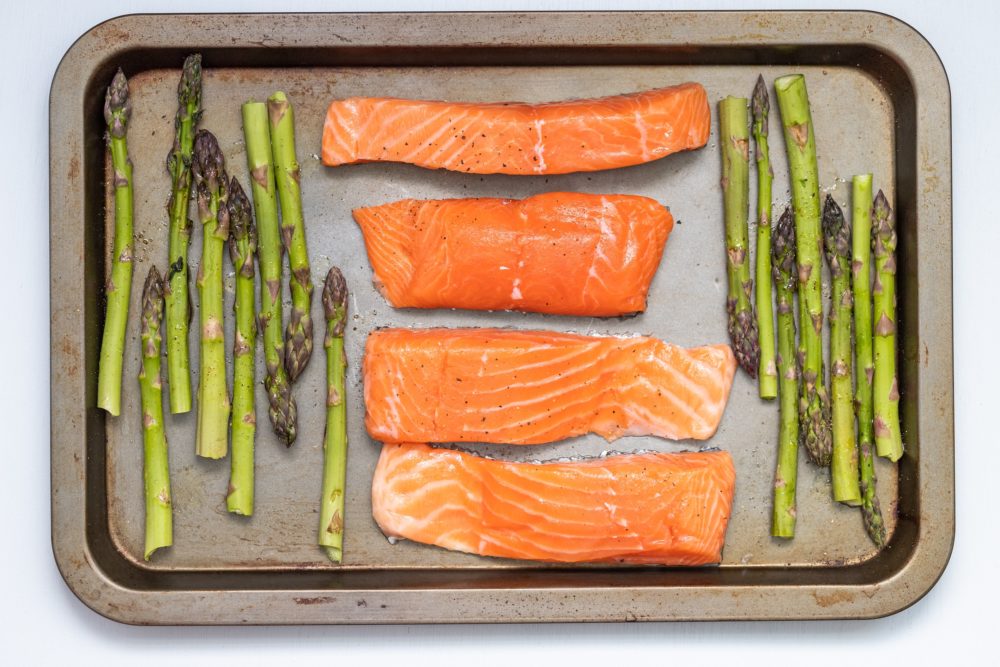
Gluten
Gluten is found in many products and can be difficult for some people to digest. If you suspect that gluten might be causing issues for you, try cutting it out for a few weeks and observe how you feel. Be sure to research where gluten hides — it’s not just in bread and pasta but also in oats, spelt, processed foods, soy sauce, deli meats, some supplements and medications, store-bought soup bases, and even beer. If you notice improvements like reduced IBS symptoms, better energy, improved sleep, clearer skin, fewer mood swings, or reduced headaches, it might be worth getting tested for gluten intolerance or simply continuing to avoid it for a while.
However, a word of caution: if you have no trouble digesting gluten, there’s no need to adopt a gluten-free diet just because it sounds healthier. Gluten-free products can be more expensive, and cutting gluten unnecessarily may even increase your sensitivity to it over time. Bloating alone doesn’t mean you need to avoid gluten.
Organic vs Non Organic
Buy organic when your budget allows, it’s as simple as that. If you can only afford to buy some organic foods then put that money towards produce on the Environmental Working Group’s Dirty Dozen (the products with the most pesticide residue), and buy non-organic produce from the Clean 15 list
Buy Local
Buying from local suppliers and farmers markets is such a winner – it feels great to be putting back into the community; is a great way to connect with your local farmers; you will be buying in season; is often more affordable and the produce should be organic and non-GMO. If you are able to grow some of your own fruit and veggies – even better!
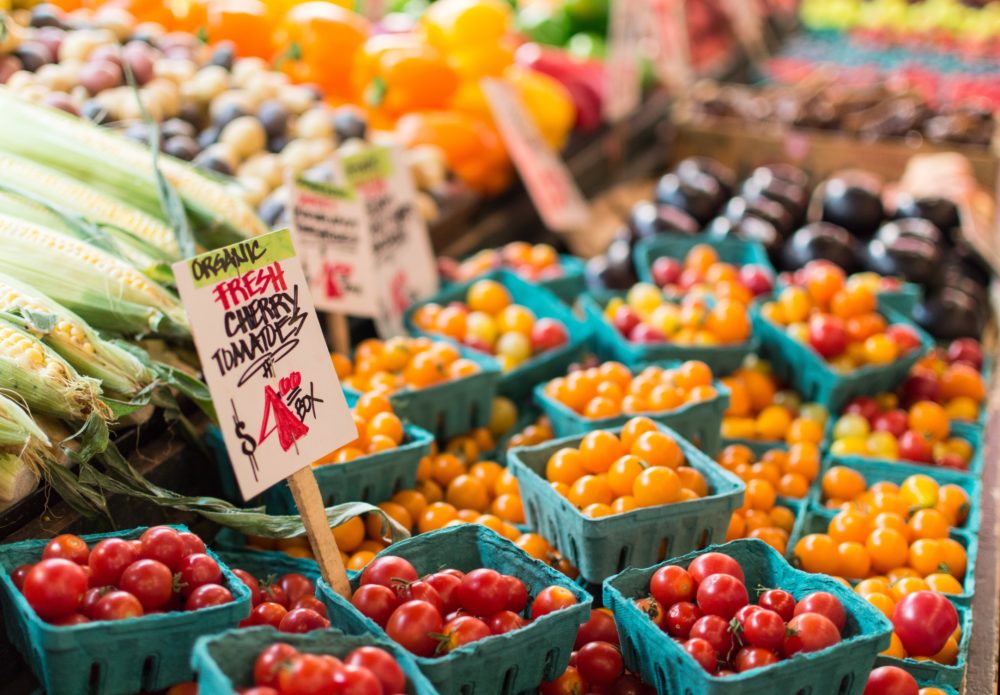
Time Restricted Eating
This is another one that has slightly blurry lines. Don’t just skip breakfast and then eat whatever, whenever later in the day. Make sure your first meal of the day is full of protein, good fats, and fibre.
Fasting — or time-restricted eating — can raise cortisol levels, so if you find yourself more stressed, waking in the early hours of the morning, and unable to get back to sleep, consider widening your eating window.
As a very general statement, men tend to manage fasting a bit better and often see more consistent results than women. For most of my clients, I recommend aiming for an overnight fast of around 12–14 hours.
A word of caution: If fasting starts to feel restrictive or fuels a negative relationship with food, it’s not serving you. For anyone with a history of disordered eating, fasting can sometimes worsen unhelpful thought patterns around food. Always listen to your body first — fasting is just one tool, and it should never come at the cost of your overall well-being.
Stimulants – Tea, Coffee, Alcohol
If you enjoy your morning coffee buzz, there’s no need to give it up — but timing is everything. Start your day with water to rehydrate, and give your body at least 60–90 minutes before reaching for caffeine. Having it after breakfast is even better, as it supports steady energy and reduces stress on your nervous system.
Aim for no more than 1–2 cups a day, and avoid caffeine after lunch. Even if you fall asleep easily, stimulants in the afternoon can still reduce sleep quality and recovery.
If you’re looking for alternatives to coffee, try matcha or green tea for a gentler caffeine boost, or explore mushroom-based blends like reishi (calming), lion’s mane (focus), chaga (immune support), or cordyceps (energy and endurance).

Alcohol is often part of social connection and relaxation, but it’s important to be mindful of how it affects your body — especially during perimenopause. Research shows that even small amounts of alcohol can disrupt sleep quality, increase hot flashes, affect mood regulation, and make it harder to manage weight. It can also heighten feelings of anxiety and impact hormonal balance.
If you enjoy a glass of wine or a social drink, it doesn’t need to be off-limits. But if you’re struggling with sleep, navigating a stressful season, aiming for weight loss, or noticing shifts in mood or energy, consider taking a break from alcohol and simply observing how your body feels without it.
When (and if) you reintroduce alcohol, do so intentionally — with awareness and respect for the way it impacts your health and wellbeing.
Perimenopause and Menopause
I see perimenopause as an invitation to level up your nutrition and work with your changing hormones rather than against them. As oestrogen and progesterone begin to fluctuate, your risk of muscle loss, bone density decline, and blood sugar swings increases. This is why protein becomes critical: it helps preserve lean muscle, supports metabolism, and keeps you fuller for longer. Healthy fats are equally important, as they provide the building blocks for hormone production and support brain health during times of hormonal change. Fibre-rich plant foods help regulate digestion and promote a healthy microbiome, which plays a role in managing both mood and inflammation.
Most importantly, this stage of life isn’t about restriction — it’s about nourishing over avoiding calories. Adequate calories, balanced across protein, fats, and complex carbohydrates, give your body what it needs to stabilise energy, improve sleep, and buffer against the effects of shifting hormones. Think of perimenopause as your body calling for deeper care: food isn’t just fuel here, it’s one of your strongest tools for balance, resilience, and vitality.
What It Looks Like On A Plate
Let’s take a look at what a healthy day of eating might looks like.
For each meal try to set up your plate to include protein, plant diversity, fibre, health fats, complex carbs and ferments.
Breakfast
Green Smoothie
1/2 – 1 cup of spinach or kale, add some cucumber as well if you have it
1/4 avocado
1 cup unsweetened plant-based milk
1/2 banana
1 tbs chia seeds / LSA / Psyllium husks
Protein powder – introduce slowly if you are new to protein powder
1 tsp tahini
Hemp seeds sprinkled on top
or
Greens & Eggs
Bok choy, spinach, edamame and zucchini sautéed in E.V.O.O with 2 x eggs, topped with avocado, nutritional yeast, chia seeds, chilli flakes and sauerkraut.
Herbal tea / green tea
Lunch
Big ‘everything’ salad
Rocket, iceberg, grated carrot, grated beetroot, spring onions, celery, sliced apple, avocado.
Protein options – tinned or cooked legumes / tofu / tinned tuna / grilled chicken / sliced grass-fed beef / grilled halloumi / flaked baked salmon
Complex carbs – legumes, brown rice, quinoa, sweet potato
Toppings: linseeds, feta, olives, kimchi, walnuts, sunflower seeds, nutritional yeast
Dressing: lemon and extra virgin olive oil / balsamic vinegar and extra virgin olive oil / tamari and rice wine vinegar
or
Roast Veggie Salad – parsnip, carrots, sweet potato, swede, garlic, cauliflower. Add to a base of mixed greens, top with chickpeas, pumpkin seeds and pine-nuts, dress with extra virgin olive oil and balsamic vinegar
Dinner
Grilled salmon with broccoli, sautéed leeks in E.V.O.O and sweet potato mash
or
Roast chicken with asparagus, roast carrots and sautéed kale in E.V.O.O
or
Eggs with spinach, tomato, silverbeet and brown lentils cooked in ghee
or
Easy Green Curry – Steam 1C of veggies (fresh of frozen) – kale, spinach, broccoli, broad-beans. Fry a spring onion and sliced ginger in E.V.O.O, turmeric and cumin, add then add the steamed green veggies. Add coconut milk, salt and pepper and a sprinkle of desiccated coconut. Top with protein – shredded chicken, tofu or white fish.
Snacks
Each meal should keep you full for 4-6 hours, but if you need to snack here are some options:
- Handful of raw nuts: walnuts, brazil nuts, almonds, macadamia
- Olives
- Kimchi
- Hormone Balancing Bliss Balls
- Fruit
- Veggie sticks and hummus
- Sliced apple with almond butter
- Smashed avocado with chilli flakes, sea salt and lemon
- Dark chocolate (aim for 85%)
- Herbal teas
Tracking Progress
In my experience, clients tend to track progress in two main ways:
- Closely monitoring the data
- Tracking once, then forgetting
When you kick off healthier eating, I suggest weighing yourself and taking a few key measurements (waist, hips, top of arm, top of leg). From there, it’s about finding the approach that works best for you.
Some people thrive on regular tracking. The theory goes that what you measure improves, so they use tools and apps to monitor progress closely — food diaries, step counters, weekly weights and measurements, sleep trackers, fasting glucose checks or body mapping. For more analytical types, the data is motivating and gives a sense of achievement.
For others, that level of monitoring feels restrictive and stressful. In that case, I recommend recording your starting stats (weight, a few key measurements, and maybe a body map if you’d like) and then leaving it. Your progress will show up in different ways: better sleep, easier movement, more energy, and clothes fitting more comfortably. You don’t need daily data to know you’re getting healthier.
Both approaches work — it’s just about choosing the one that fits your personality and keeps you motivated.

Keeping On Track
Accountability makes all the difference. Whether it’s a supportive friend or working with a coach (👋 if you’re curious about 1:1 coaching, you can book an application call here), having someone in your corner helps you stay consistent.
Cravings aren’t really about willpower or “bad snacking habits.” They’re often tied to emotional drivers and the routines built around satisfying them. More often than not, cravings are about feelings rather than true hunger — frustration, stress, loneliness, or sadness.
The tricky part is how quickly a craving can become a habit. Just a few days of giving in can reinforce the pattern in your brain.
Biologically, we’re wired to seek sweet, salty, and fatty foods because they once supported survival — giving us quick energy, conserving fluids, and helping us store fuel. Today, that same wiring gets reinforced by dopamine, the neurotransmitter that creates signals of pleasure and reward when we eat these foods.
That’s why it’s so important to plan for challenging moments and have real support in place — so you can respond with awareness instead of slipping into old patterns.
TLDR;
The most powerful step you can take when making positive changes to your diet is to become the observer. Notice how different foods make you feel. Do you reach for chocolate after a stressful email or an argument? How do you feel after eating dairy, gluten, or pizza? Pay attention not only to the physical effects — bloating, energy dips, headaches — but also to your mood (irritability, happiness, loneliness) and the emotional patterns, especially that inner negative self-talk.
This is about building a healthier relationship with food and giving it the respect it deserves.
And remember — it’s not about perfection, it’s about progress.
For me, true health means being strong and resilient enough to handle the occasional indulgence. Because yes, eating well is vital — it helps us feel energised and grounded — but it’s equally important to share a big meal and a glass of wine with people we love, to laugh (especially at ourselves), to move, dance, explore, travel, and sometimes even party. When we become too rigid, focused only on macros, green juices, or “perfect” habits, we lose sight of the bigger picture of what it really means to live healthily.
So go and claim your health. Today is the day. Change is challenging, but it’s also uplifting, empowering, and absolutely worth it.
You’ve got this.
Wanting to dive even deeper – here is some further reading I recommend:
Food: What The Heck Should I Eat
The Hormone Cure
How To Be Well
…and remember…if we are too focused on counting macros and calories life can feel out of balance and then we miss the whole darn point of what it means to be healthy.
Ready to make positive changes with your diet and lifestyle but need guidance, accountability and a step by step plan to get you there? Check out my coaching page for details on The Blance Code™ 1:1 Coaching.




